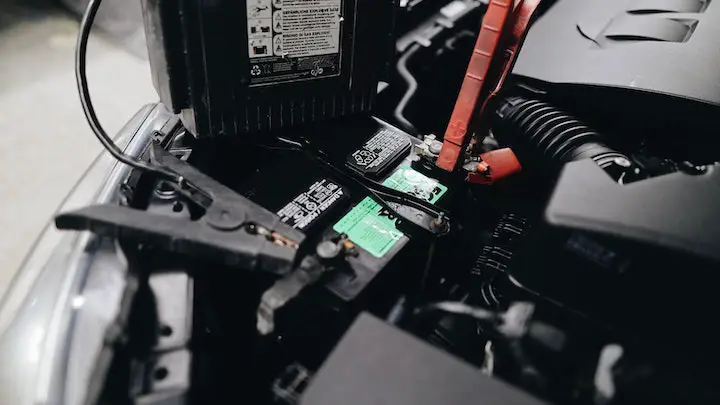A car battery, like most wired electrical devices, comes with a positive and negative end. These terminals are responsible for the flow of current that charges or discharges a battery.
For example, in a lead-acid battery, the positive end is the anode while the cathode is the negative end. Electrons flow from the anode to the cathode when the battery is plugged in (charging) and flows from the cathode to the anode when it is discharging.
In this guide, I will be sharing the secrets to determining the positive end of a battery, why it is important, what happens if you get it wrong, and how to avoid errors.
Ways to Identify the Positive Side of a Battery?

Identifying the positive end of a battery is essential for jump-starting or removing a car battery. To identify this terminal, these are the various methods you can use:
1. Check for labels on the battery
One of the simplest ways to identify the positive end of a battery is to check the metal surface for symbols such as + (which indicates positive) and – (which indicates negative).
Some batteries may also tag the metallic nodes in positive and negative directions.
2. Shape of the metal
The first method may not work for extremely old batteries because those symbols may have faded. An alternative method to identifying the positive terminal of a battery is the shape of the metallic node.
In some batteries, this area is often larger with a longer (pointed) tip. The negative end is usually flatter.
3. Color code
Color code is also another popular way to identify the positive end of a battery. In most cases, batteries come with a red and black color code.
Red represents the positive end while black stands for the negative end. Please note that not all batteries follow this code and it should not be your only means of identification.
4. Multimeter
If you are still not sure about which side is positive, using a multimeter is foolproof (will erase all your doubts). However, you need one or easy access to one to engage in this operation.
When using a multimeter, the first thing to do is to change its setting to “DC Voltage”. The device has two (red and black) probes. To identify the positive end of a battery, touch any of the battery terminals with the red probe.
Any of the terminals which reflect a positive reading is the positive end. The other node is presumably the negative end.
What Happens When You Fail to Connect a Battery Rightly?
Connecting a battery wrongly can be fatal as it can lead to an explosion, and damage to the battery and other electrical components within a car or any device.
In proper terms, this is known as reverse polarity and it is usually responsible for overheating, venting, and fire in lead-acid batteries.
4 Ways to Avoid Battery Connection Errors
It is okay to be a fan of do-it-yourself (DIY). However, when dealing with car batteries, there is little or no room for errors.
Here are major practices that can help you avoid connection errors and keep you safe when it comes to batteries:
1. Read and understand instructions before starting
Whether you are installing a new battery or connecting jumper cables, you must go through the user manual first. This is because you would likely be engaging another car’s (different) battery or installing a new battery different from the old one.
This will help you know what works for new or different batteries. Never assume.
2. Use a battery tester
Having a battery tester will always be great advice. With this device, you can always check and cross-check every terminal before engaging in connections.
3. Label or keep track of your cables
If you don’t plan on checking and cross-checking with a battery tester, you can always label your cables with a marker or tape during any battery replacement or jump-start operations.
This prevents confusion and can make your work faster compared to testing and retesting terminals before connections.
4. Watch out for sparks
Sparks are somewhat unavoidable during battery connections. However, when they occur, it usually means there is a wrong connection somewhere.
It can also be an indication that you need to check every aspect of the operation for correctness.
FAQs
Is the positive end of a battery the cathode?
The positive end of a battery is the cathode and it is the electrode that absorbs electrons.
The anode is the negative end of a battery and it is responsible for releasing electrons.
Which end of the battery goes on in the spring?
The negative end of a battery goes on the spring when you are adding an AAA or AA battery into a new compartment.
Why do batteries have a positive and negative end?
Batteries have a negative and positive end because they allow the chemical reactions within the cell to produce and absorb electrons.
Emissions take place in the anode while absorption takes place in the cathode.
Wrapping Up
Identifying the positive end or both ends of a battery is very essential to any battery operation. Errors can have detrimental effects on the battery, electrical system, and yourself.
This guide has explained the various methods you can employ to determine the positive end of a battery and how you can avoid errors. In cases of uncertainties, you must consult a battery expert on the way forward.
I hope you found this guide helpful. Car batteries can also be recharged if they are dead. Please see how to recharge a completely dead battery to know the processes involved and how to jump-start a car.
Thanks for reading.

